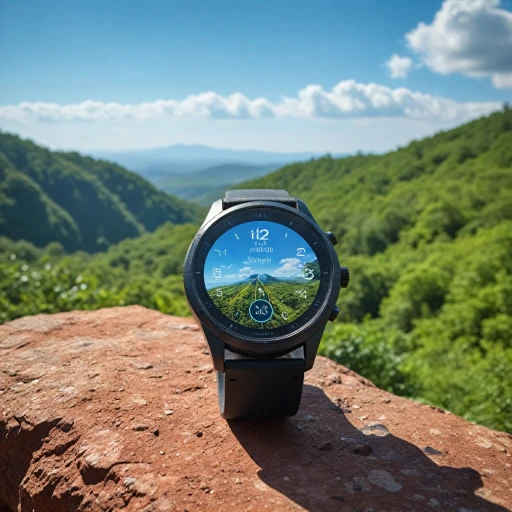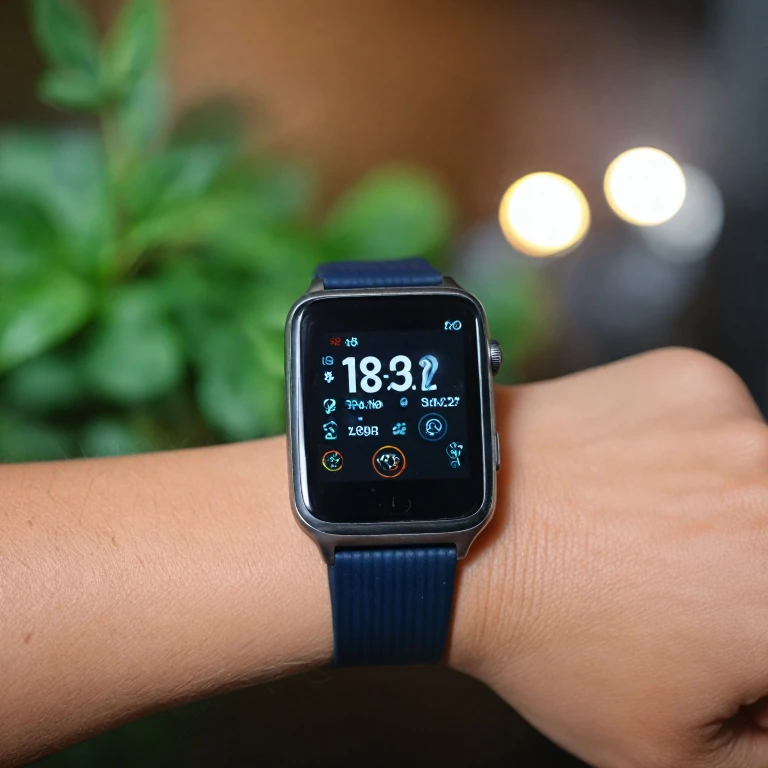Understanding Standalone Smartwatches
What Sets Standalone Smartwatches Apart?
Standalone smartwatches have redefined the way we perceive and utilize wearable technology. Unlike traditional smartwatches, this category functions independently, eliminating the necessity of tethering to a smartphone for connectivity. This shift makes it possible to access data, receive notifications, and even make calls directly from your wrist. Standalone devices usually incorporate a SIM card or eSIM technology, enabling cellular support, which bridges the gap between convenience and functionality.
Enhanced Features of Standalone Models
Many popular models like the Samsung Galaxy Watch and Apple Watch Ultra offer a range of features tailored for standalone use. Here are key highlights:
- Cellular Connectivity: With LTE capabilities, these smartwatches allow users to receive calls, send messages, and use data without being tied to their phone.
- Extended Battery Life: Despite their advanced features, battery innovation in recent models helps support prolonged use, even with continuous cellular activity.
- Robust Health Monitoring: Heart rate tracking, fall detection, and other health metrics are integral, making them indispensable for fitness enthusiasts and individuals conscious about their health.
- Water Resistance: This ensures your smartwatch is resilient against water exposure, enhancing its durability and usability.
The Device Ecosystem: More than Just Watches
Standalone smartwatches operate on various platforms, including iOS and Android. Apple, Samsung, and even new entries like the OnePlus Watch and Google Pixel Watch diversify the selections available.
- Apple Watch Series: Known for their seamless integration into Apple's ecosystem, offering unmatched support and features for iPhone users.
- Best Android Alternatives: The Galaxy Watch series and OnePlus Watch emerge as strong competitors, especially for those entrenched in the Android ecosystem.
Ultimately, the flexibility and autonomy offered by standalone smartwatches place them in a league of their own within wearable tech. To deepen your understanding, consider exploring detailed comparisons among these devices to determine which model aligns best with your specific needs. For more insights on OnePlus offerings, you might find this
OnePlus Watch comparison useful.
Key Features of Standalone Smartwatches
Distinguishing Highlights of Standalone Smartwatches
Standalone smartwatches boast an array of innovative and impressive features that distinguish them from typical smartwatches. With their ability to operate independently from smartphones, users enjoy a seamless and convenient experience. Here are some notable aspects that contribute to the appeal of these advanced devices:
- Cellular Connectivity: Enabling users to make calls, send messages, and access apps directly from the device, thanks to integrated LTE support. This is a key feature that elevates smart watches from mere accessories to comprehensive communication tools.
- Robust Battery Life: Despite the compact size, these devices often boast impressive battery life, allowing users to stay connected for extended periods. Models like the Samsung Galaxy Watch offer competitive battery performance.
- High-Quality Displays: Equipped with vibrant and clear displays, standalone smartwatches ensure information is easily readable in various lighting conditions. The Apple Watch Ultra and best Android models, such as the OnePlus Watch and Google Pixel Watch, incorporate high-resolution screens for enhanced user experience.
- Health and Fitness Tracking: These watches come with comprehensive health monitoring features, including heart rate monitoring and fall detection support. Such capabilities are essential for users looking to maintain an active lifestyle.
- Water Resistance: With a focus on durability, water resistance is a common feature, ensuring that the watch withstands diverse environments and activities. This makes them suitable for outdoor enthusiasts and athletes alike.
- Competitive Pricing: While standalone smartwatches are packed with ultra-modern features, various models cater to different price points, making them accessible to a wide range of customers.
For those interested in digging deeper into the evolution and contextual usage of smartwatches, exploring the history of the
watch fob in the age of smartwatches offers an intriguing perspective.
Advantages of Using a Standalone Smartwatch
Unveiling the Benefits of Going Standalone
Choosing a standalone smartwatch opens up a world of possibilities beyond the conventional tethered watch-phone connection. Here’s a deep dive into why opting for a standalone smartwatch can be a game-changer:
- Independence from Smartphones: Acting as miniature, wrist-worn smartphones, standalone smartwatches eliminate the necessity to stay constantly tethered to your phone. This independence is especially valuable for active lifestyles where carrying a phone can be cumbersome.
- Integrated Cellular Connectivity: With watch LTE capabilities, these devices allow you to make calls, send messages, and stream music without needing a connected phone nearby. Famous models like the Apple Watch series, Samsung Galaxy Watch, and OnePlus Watch support cellular connectivity, enhancing their utility.
- Comprehensive Health Monitoring: Building on their cousins' prowess, standalone smartwatches include advanced health metrics like heart rate monitoring, fall detection, and even ECG capabilities. Whether it's the Apple Watch Ultra or the sleek Samsung Galaxy Watch, these devices help maintain health awareness with ease.
- Extensive App Support: With the Google Pixel Watch and best Android contenders, users enjoy a broad range of applications that support their daily needs, from fitness tracking to smart home control, making them more versatile than ever.
- Diversified Features: Standalone smartwatches often feature robust displays, impressive water resistance, and long-lasting battery life, which is crucial for reliability. Whether it's jogging with the Galaxy Watch or exploring new horizons with the best smartwatches, it's about convenience and functionality on your wrist.
- Variety in Design and Pricing: Standalone options, whether they’re ultra-high-end like the best Apple Watch or more budget-friendly, offer varied price points and designs, so one can choose according to taste and budget. For those interested in elegant designs, here's a guide to elegant timepieces that might pique interest.
Challenges and Limitations
Potential Drawbacks to Consider
While standalone smartwatches, like the Apple Watch Ultra, Samsung Galaxy Watch, and OnePlus Watch, offer powerful features, they also come with their own set of challenges and limitations. Here are some common concerns that you should keep in mind before investing in one:
- Battery Life: One major issue with many standalone smartwatches is their battery life. Because these devices often include cellular connectivity – allowing them to function independently of a phone – they tend to consume a lot of power. This requires frequent charging, which can be a hassle for users who need their smartwatch to maintain a charge over extended periods.
- Price Tag: Smartwatches with extensive features often come with a hefty price tag. High-end models, like the best versions of the Apple and Samsung Galaxy smartwatches, can significantly impact your wallet compared to traditional watches or non-standalone smartwatches.
- Limited App Support: Some standalone models, particularly those not running on well-supported operating systems like Apple's watchOS or Google's Wear OS, may have limited app support. This can restrict the device's usability and may not meet all your needs.
- Display Size: The display on a smartwatch is naturally smaller than that of a phone, making it challenging for some users to interact with the device. While it offers portability, it may not be the best for tasks that require a larger screen.
- Connectivity Issues: While cellular connectivity gives standalone smartwatches key autonomy, network coverage can be inconsistent, potentially affecting functionality, especially in areas with poor cellular service.
- Complexity: With numerous features packed into such a small device, users may find it challenging to navigate all the functionalities efficiently, especially those who are not particularly tech-savvy.
When choosing the best smartwatch for your needs, it's essential to balance the features you desire with these potential drawbacks. Standalone smartwatches offer impressive technology but require a thoughtful approach to their limitations.
Comparing Popular Standalone Smartwatch Models
Comparative Analysis: Noteworthy Smartwatch Models
Delving into the world of standalone smartwatches, several models stand out, each offering distinct features, utilities, and price points. Here's a look at some of the popular options available today:
- Apple Watch Ultra: Known for its robust build and cutting-edge features, the Apple Watch Ultra is a top-tier choice. It boasts a vivid display, water resistance, and advanced health monitoring capabilities, including heart rate tracking and fall detection. Its support for LTE cellular functions ensures that users can make calls and send messages even when away from their phones.
- Samsung Galaxy Watch Series: Embraced by Android users, the Samsung Galaxy Watch lineup, particularly the Galaxy Watch LTE models, excels in battery life, allowing for extended usage without frequent charging. The focus on health tracking and seamless integration with Android smartphones makes it a compelling choice for those immersed in the Android ecosystem.
- Google Pixel Watch: Google’s introduction to the smartwatch market, the Pixel Watch melds minimalist design with essential features. With support for Google services and Android compatibility, it serves as a practical option for those seeking smooth interfacing with their Android devices and access to Google’s suite of apps.
- OnePlus Watch: With a competitive price point and emphasis on delivering a smooth user experience, the OnePlus Watch caters to those looking for essential smartwatch features without breaking the bank. While it may not have the extensive ecosystem of more established brands, its battery life and sleek design put it in a favorable position.
These standalone models demonstrate diversity in features ranging from display quality to battery life. Whether you're looking for the peak of luxury or practicality, today's marketplace offers something for everyone. This choice ultimately hinges on user priorities, such as brand loyalty, budget constraints, or specific feature requirements.
Future Trends in Standalone Smartwatch Technology
The Evolution of Smartwatch Technology
In recent years, the smartwatch industry has experienced rapid advancements, and the evolution is far from slowing down. As technology continues to develop, several trends are emerging that promise to redefine the smartwatch experience.
- Integration with Health Features: Smartwatches are increasingly becoming essential health tools. Features like heart rate monitoring and fall detection are now common. The emphasis on health may soon expand to advanced metrics, such as electrocardiogram (ECG) functionalities and blood oxygen levels, setting new standards for both Apple Watch and Android smartwatch users.
- Enhanced Battery Life: One of the persistent challenges of smartwatches has been battery life. Manufacturers like Samsung and OnePlus are investing in research to produce devices that maximize energy efficiency without compromising functionality. As a result, even the best smartwatches might soon need fewer charging sessions.
- Seamless Connectivity: The ability to operate independently from smartphones will improve with advancements in cellular technology. LTE support is gradually becoming a staple feature, allowing watches like the Samsung Galaxy and Pixel Watch to manage calls and applications solely on the wrist.
- High-Resolution Displays: Display technology continues to make strides in smartwatch design. We can expect sharper, more vibrant screens as manufacturers improve display quality. This is a trend led by watch series like the Galaxy Watch, which focus on user-friendly, high-resolution interfaces.
- Customization and Personalization: The future of smartwatches looks increasingly personalized, with a robust selection of watch faces, straps, and sizes. This is pivotal for brands like Google, aiming to cater to diverse styles and preferences, offering users a personal touch.
- Water Resistance and Durability Enhancements: Addressing consumer demands for durability, future smartwatches will likely feature enhanced water resistance and rugged designs. This progression suits active lifestyles and adventurous users, ensuring the longevity of devices such as the Apple Watch Ultra.
These emerging trends will likely not only maintain but also escalate the appeal of standalone smartwatches. As developers innovate, users stand to benefit from an array of features that enhance life, promising a future where technology seamlessly integrates into daily wearables.

